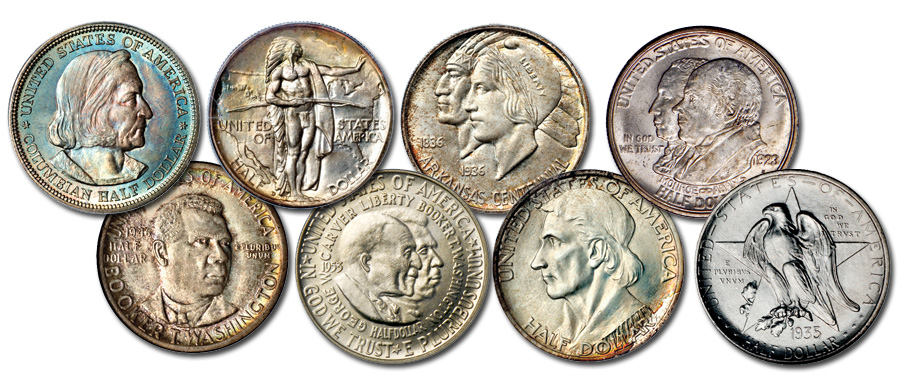
Question: I noticed that some commemorative coins were struck for multiple years while others were made with just one date? Is there any reason besides good old-fashioned greed for any of these multiple-year issues?
Answer: Thanks for the interesting question which, incidentally, you partly answered on your own. From the first year of silver commemorative half dollars, 1892 through the end of the “golden era” of American commemorative coinage in 1954, many of the most important and historical half dollar issues make a one-shot-only appearance. Exceptions exist of course – the 1892 and 1893 Columbian Exposition half dollars are one exception – but for the most part the early commemorative half dollars were one-year-only productions. Even in that era, however, the series was not free of shenanigans. The 1923-S Monroe Doctrine half dollar, for instance, was a vehicle for the motion picture industry to raise funds under the loosely veiled guise of history. As Q. David Bowers and other authors have noted in print, the abuse of the commemorative half dollar series and the associated greed came to a head in the mid-1930s, especially so in 1936 when design after design was given the green light to become a commemorative half dollar. Long-lived series such as the Oregon Trail (1926-1939, intermittently), Texas (1934-1938), Boone (1934-1938), Arkansas (1935-1939), Booker T. Washington (1946-1951), and Carver-Washington (1951-1954) were struck at all three mints as well. Even at the time of distribution, the sets were expensive, as each coin sold for a premium over face value, sometimes several dollars each, and it was the height of the Depression when many of these designs came into being. If only the buyers who shelled out hard-earned money back then could see the values of their favorite commemorative half dollar design types in today’s numismatic marketplace. Hopefully some collectors held onto the coins long enough to benefit from the price increases that came later.





